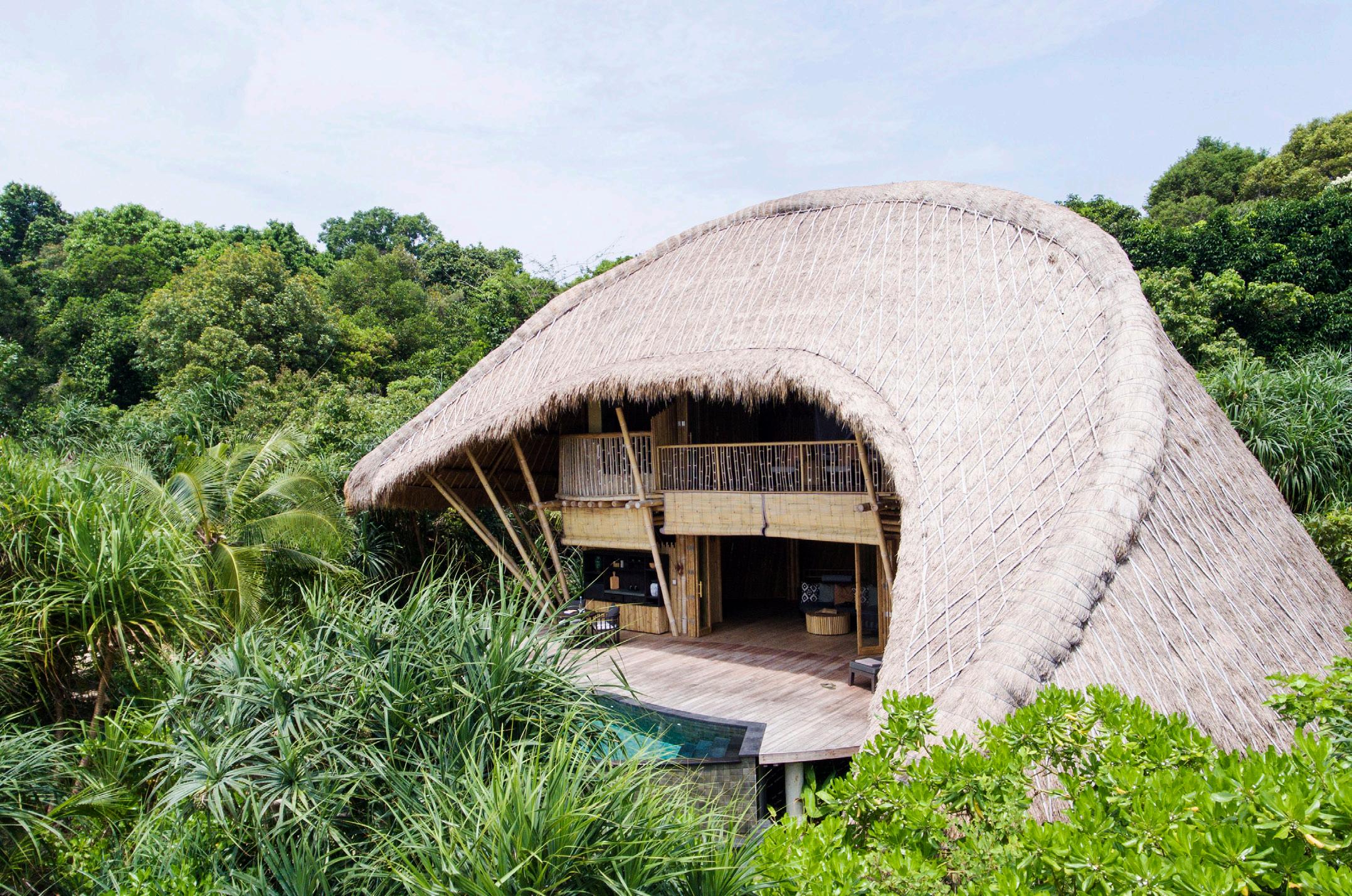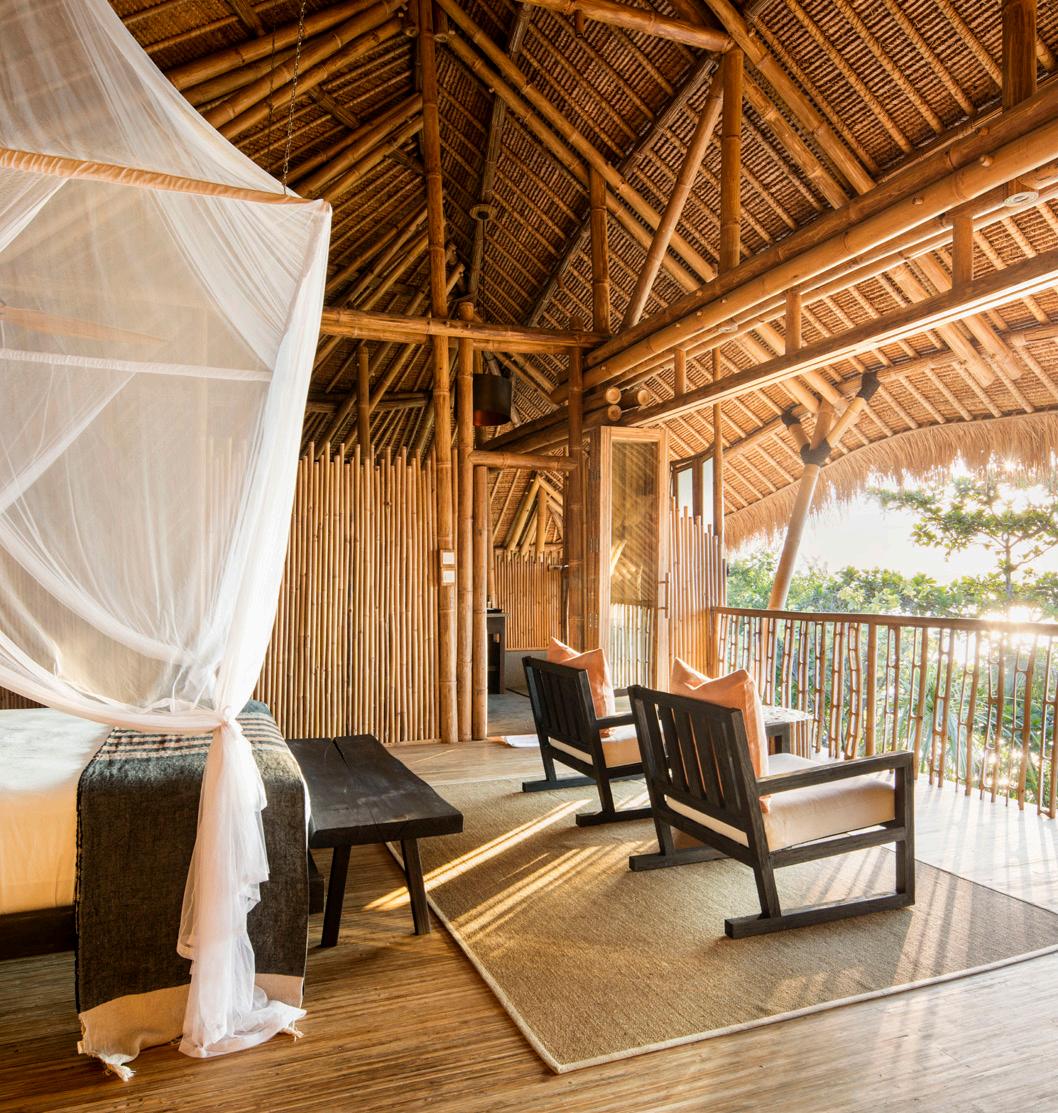
4 minute read
Leaving Only Footprints
Cempedak Island's Example of Sustainable Tourism
by Meg Farrell Sine
Advertisement
Sustainability is a common buzzword but what does it actually mean? On a personal level, it involves making lifestyle choices to minimize our impact on the environment. However, there is one big wrinkle about practicing sustainability in Singapore: air travel. Unfortunately, one big source of environmental impacts, carbon emissions from airplanes, is sky high in Singapore (pun intended).
Luckily there are easy and ethical ways to minimize the environmental impacts of air travel such as buying carbon offsets and following some basic, responsible travel tips. Taking a vacation, flying to visit family or attending an important business event should in no way be a guilt trip, especially since many of us have not even travelled since 2020 BC (before Covid)!
Singapore recently opened a "sea travel bubble" to Batam and Bintan, Indonesia. Therefore, my advice is to ignore the siren call of Phuket, Bali and the Maldives and consider the following travel alternative to a nearby, idyllic island of Indonesia off the coast of Bintan.

Cempedak Island
In 2019, just after moving to Singapore, my husband and I read about this privately-owned island called Cempedak (pronounced Chem-pe-dek). Only a twohour journey by ferry from Singapore, Cempedak is recognized as a marine paradise and for the unique architecture of its spacious bamboo villas.

Sea View Villa
We liked the inspiration behind the development of Cempedak: “Simple barefoot luxury in a sublime natural setting.” In practical terms, the owners wanted to create an accommodation close to Singapore that offered high standards of comfort, service and value while also implementing the ideals of sustainable tourism. This account of my visit, links to their website and the accompanying photos are proof they were able to accomplish both.

Wake Up To The Sunrise
Each of the island’s 20 seaside villas and service buildings were hand-crafted of natural materials with vaulted ceilings and elevated off the ground. This allows the natural sea breezes to keep the rooms cool without needing air conditioning. We slept very comfortably under a mosquito net and quiet ceiling fan. Each villa has a private plunge pool and solar cells on the roof provide ample hot water for showers. Indeed, one half of the energy used on the island is provided by solar cells.
We found the dining service had a sumptuous menu of both Indonesian and international food, most of which is fresh produce and protein grown at their private farm on the mainland, homemade at the resort or purchased from local farmers and suppliers. Every meal was excellent. The island experience also includes numerous ways to have fun in the water, playing sports, or relaxing at the Rock Spa or Dodo Bar. My favorite activity was walking the expansive mud flats at low tide out to a picturesque rock island on the edge of the sea.

Meg on the Rock Island at Low Tide
All the employees of the resort except one are Indonesians happily practicing competent skills in hospitality, building trades and sustainable resort management. Recognized with several tourism awards, Cempedak’s CEO, Andrew Dixon, reports that “the best recognition is from our guests and how our staff have become champions and advocates of sustainability.”
Visit their website to read about how to get there, more details about the island experience and their admirable sustainability initiatives.
For reservations, contact relax@cempedak.com. Please note that Cempedak does not allow children under 16. However, the owners also own a sister island nearby called Nikoi that is great for families with young children.

Meg is AWA's Communications Director. Contact her at communicationsdirector@ awasingapore.org










